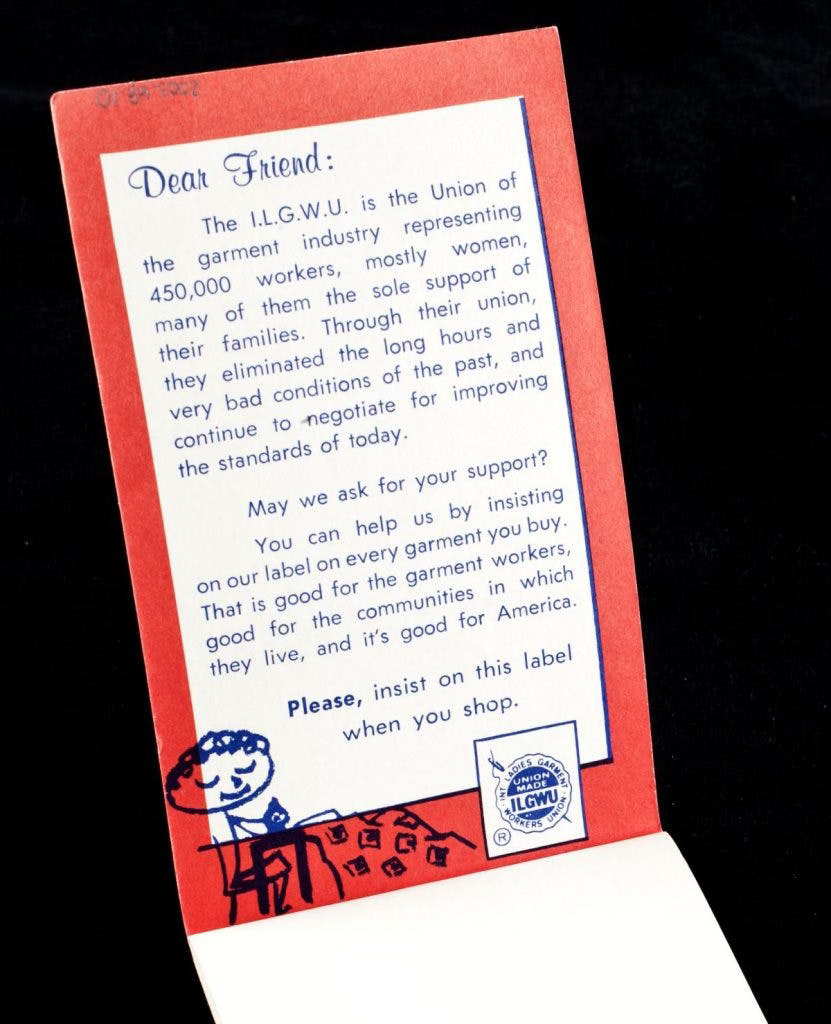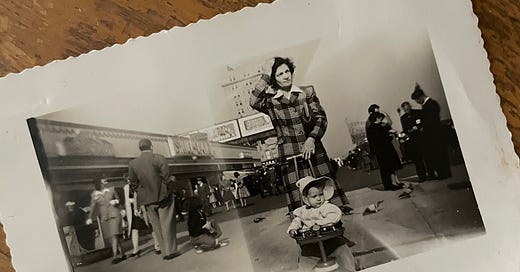For Tillie
My great-grandmother was one of the Russian and Eastern European Jewish women immigrants who made up the majority of the garment industry and became an essential part of the American labor movement.
Because it’s Labor Day, and that means a lot more than the end of summer, a three-day weekend, and some really great sales on bedding and eyelash serum, I’m honoring my great-grandmother Tillie.
She was the matriarch of our family who brought us all to America. Her first great-great-grandchild, Thalia, is her namesake.
Tillie immigrated from Kiev, through Germany, landing in Philadelphia to escape the pogroms.
She would have been about 13 during the 1905 Kiev Pogrom, in which hundreds of Jews were raped, tortured, wounded, or outright massacred, their businesses looted and homes destroyed at the hands of antisemites who held the disgraceful and entirely unoriginal idea that Jews were responsible for all the world’s problems.
Sometimes I wonder what she experienced, and what she did or did not see.
I won’t ever know.
Tillie arrived in the U.S. listing her profession as “ladies coat finisher.”
This made her one of the many Russian and Eastern European Jewish women immigrants and refugees who made up the majority of the garment industry. These same women became an essential part of the American labor movement.
Tillie was active in the first Philly branch of the International Ladies’ Garment Workers’ Union.
When I was a kid, we all sang along to the “Look for the Union Label” jingle whenever it came on TV, so proud that we were related to someone in some way connected to that chorus of multiracial men and women in their patterned blouses with giant collars, singing about feeding their families.
I still get teary when I hear it.
Look for the union label when you are buying that coat, dress, or blouse
Remember somewhere, our union’s sewing,
our wages going
to feed the kids and run the house
We work hard, but who’s complaining
Thanks to the ILG we’re making our way
So always look for the union label
it says we’re able to make it in the U.S.A.

12 years after her arrival, Tillie became a naturalized citizen. By then she was divorced, sewing full-time, and raising three young children alone, while still working to make factories and workplaces safer for all.
Exactly 99 years later, she has a gaggle of adult great-grandchildren, including one living in Brooklyn, three short miles from the Asch Building that housed the Triangle Shirtwaist Factory.
I am so grateful for Tillie and for everyone in the labor movement who fought — and still fight — for all of us to have safe working conditions, job health, decent pay, wage equality, reasonable hours, health insurance, and employment with dignity.
(Also, this little thing called “the weekend” that didn’t just magically become a thing one day.)
As much as I don’t know about Tillie, I do know this:
She would be so proud of her great-great-granddaughter who got her SAG card this year.







You, like me and my parents, are our ancestors’ wildest dreams. Russian and Lithuanian pogroms -> Immigrate to Canada ->immigrate to United States -> my father joins Army Aircorps as soon as he graduated high school-> college after honorable discharge->electrical engineer-> 3 kids all college graduates, good citizens, own their own homes. Maternal grandmother graduates U of W teachers college early 1920s-> my mother, UCLA graduate-> marries my father-> raises three kids-> has a career. Both live into their 90s. -> Remaining kids (youngest died from Covid,may his memory be a blessing ) Doing well.
Our ancestors wildest hopes and dreams.
I’m the great granddaughter or Irish immigrants on one side and granddaughter of farmers on the other. My parents both grew up working class, teaching me to respect unions and to understand all parts of the food chain and the people who keep it going. My dad then chose a career in the US Army. I love this post (and the name Thalia).